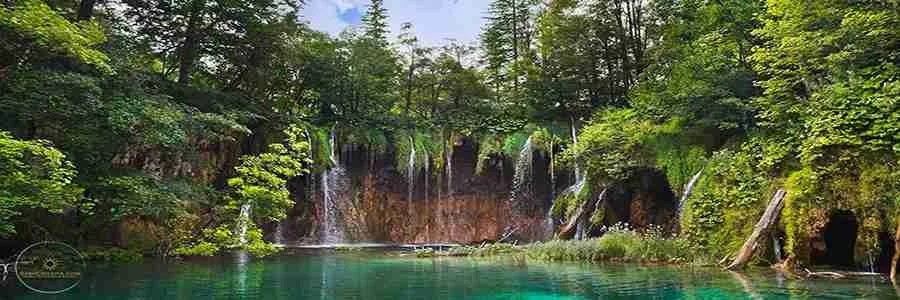Where is Croatia?
Croatia is a country located in Central Europe and the Mediterranean region. It shares borders with Slovenia to the west, Hungary to the north, Serbia to the east, and Bosnia and Herzegovina to the south. Additionally, it has a 2,028 km long coastal boundary with Italy in the Adriatic Sea.
Croatia‘s distinct shape, reminiscent of a croissant, is a result of Ottoman Empire’s expansion into Central Europe over five centuries. Despite not being fully conquered by the Ottoman Turks, some neighboring countries, such as Serbia and Bosnia and Herzegovina, were under their control.
With a land area of 55,974 square km, Croatia has a population of 4.039 million as of the 2023 census. Nearly 90% of the population is Croatian, mostly Roman Catholic, with smaller Serbian, Bosnian, Hungarian, and Italian communities.
Main Cities and Towns in Croatia
The main cities in Croatia are Zagreb, the capital with a population of 684,000. Osijek in the northeast with 90,441 people. The coastal ports of Rijeka (128,384) and Split (176,314). Other notable towns include Dubrovnik, Makarska, Porec, Pula, Rovinj, Opatija, Zadar, and Sibenik.
Croatia country boasts an impressive 5,835 km of coastline, with 4,057 km belonging to islands, cliffs, and reefs. There are 1,244 islands and islets in the Adriatic Sea, but only about 48 are inhabited. The largest island is Krk, near Rijeka, with an area of 405,8 square km, while other well-known islands include Hvar, Brac, Korcula, Pag, Kornati, Mljet, Cres, Vis and Brijuni.
Regions is Croatia
Croatia is divided into 20 counties and is also traditionally divided into four cultural and historical regions: Croatia Proper, Dalmatia, Istria, and Slavonia.
Croatia Proper or Central Croatia, located in the central part of the country, is the region that houses the capital city, Zagreb.
Dalmatia, located along the coast of Croatia, extends from the northern island of Rab to the southern Bay of Kotor and is home to the popular tourist city of Dubrovnik. The largest city in the region is Split.
Slavonia encompasses the majority of eastern Croatia and was once a kingdom.
Istria is located on the Croatian part of the Istrian peninsula and is home to the largest city in the region, Pula, located at the southern tip of the peninsula.

The Croatian Language: A Unique Alphabet and Phonetic System
Croatian is the official language of Croatia and is written in the Latin script. The Croatian alphabet consists of 30 letters, which includes all of the letters of the English language except for the letters ‘q’, ‘w’, ‘x’, and ‘y’. However, it also includes additional letters such as ‘č’, ‘ć’, ‘dž’, ‘đ’, ‘lj’, ‘nj’, ‘š’, and ‘ž’.
One of the most interesting aspects of the Croatian language is its phonetic system. Croatian pronunciation is relatively straightforward, making it an easy language to learn for English speakers. Additionally, Croatian is a Slavic language and shares many similarities with other Slavic languages such as Polish, Czech, and Russian.
The Mediterranean Climate
Croatia is famous for its beautiful climate, with the Adriatic coast experiencing a Mediterranean climate. This means that the coast characterize warm, dry summers and mild winters. On average, the Adriatic coast receives 2,600 hours of sunlight per year, making it one of the sunniest coastlines in Europe.
The interior, of the country of Croatia, has a continental climate, which characterize hot summers and cold, snowy winters. Despite this, the country as a whole experiences a relatively mild climate, making it an ideal destination for those looking to escape the harsh winters of the north.

If you are interested in gaining more knowledge about Croatia, consider checking out:
A Study of Europe’s Eastern Region and the Croatian People
Examining the Current Political Climate in Croatia
Discover the Characteristics that Make Croatia Famous, including the Cravat, the Dalmatian Dog, Penkala and Torpedo
Celebrating the Contributions of Croatian-Born and Descendant Luminaries in Science, Literature, Entertainment, and More
- Croatia’s Cinematic Landscapes
Discover the Stunning Filming Locations of Major Productions like “Game of Thrones” and “Star Wars”
- Croatian Cuisine
A Gastronomic Journey Uncovering the Delights of Traditional Croatian Dishes
- The Reputation of Croatia
Examining the Perception of Croatia through the Views of Others
Some facts about Croatia, Europe:
Population: 4.039 million (as of the 2023 census)
Capital: Zagreb
Geographic Coordinates: 45 10 N, 15 30 E
Area: Total: 56,594 sq km
Land: 55,974 sq km
Water: 620 sq km
Area Comparative : slightly smaller than West Virginia
Land boundaries: total: 2,237 km
Border countries (5): Bosnia and Herzegovina 956 km; Hungary 348 km; Montenegro 19 km; Serbia 314 km; Slovenia 600 km

